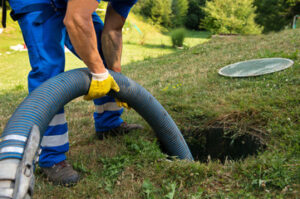Rosenberg Plumbing plays a vital role in maintaining health and comfort in modern society. Efficient water systems ensure access to clean water and proper waste removal. The complexity of modern plumbing systems requires advanced knowledge and skill. Plumbers must understand materials, pressure dynamics, and environmental factors.

The evolution of plumbing has introduced new materials and methods. Traditional metal pipes have been replaced by more durable and flexible alternatives. Improved materials resist corrosion and withstand pressure better. These changes have increased system longevity and performance.
Water conservation has become a priority in modern plumbing. Advanced fixtures and appliances reduce water consumption without sacrificing performance. Leak detection systems prevent water waste and reduce costs. Smart systems provide real-time monitoring and automatic shut-off features.
Heating and cooling systems are closely tied to plumbing infrastructure. Radiant heating relies on embedded water pipes to distribute warmth. Efficient systems maintain consistent temperatures and reduce energy consumption. Proper installation and maintenance improve system lifespan and efficiency.
Plumbing systems in high-rise buildings present unique challenges. Gravity, pressure, and flow rates require precise engineering. Plumbers design systems to maintain even distribution across multiple floors. Pressure regulation ensures consistent water access at all levels.
Plumbing inspections have become more advanced with modern technology. Camera systems and pressure tests identify hidden issues without invasive measures. Early detection of leaks and blockages prevents costly repairs. Routine inspections maintain system integrity and performance.
Stormwater management is an important aspect of modern plumbing. Proper drainage systems prevent flooding and property damage. Plumbers install and maintain storm drains, retention tanks, and runoff channels. Efficient stormwater management supports urban infrastructure and safety.
Greywater recycling has gained popularity in sustainable building projects. Recycled water supports landscaping and non-potable uses. Plumbers install filtration and storage systems to handle greywater. This reduces demand on municipal water supplies and promotes environmental responsibility.
Wastewater treatment is a key part of public health infrastructure. Plumbing systems transport waste to treatment facilities for processing. Proper system design and maintenance prevent contamination and health risks. Safe wastewater disposal protects communities and natural resources.
Commercial plumbing systems face higher demand and complexity. Large-scale systems require specialized fixtures and piping. Plumbers design systems to handle high-volume use and heavy wear. Commercial systems require regular maintenance to prevent disruption and damage.
Gas line installation and maintenance are also part of plumbing work. Safety protocols ensure proper ventilation and pressure control. Plumbers test for leaks and secure connections. Well-maintained gas lines reduce the risk of fire and health hazards.
Plumbing innovations have introduced touchless fixtures and smart controls. Motion-activated faucets and toilets improve hygiene and reduce water use. Smart monitoring systems alert homeowners to leaks and abnormal usage. Technology integration enhances convenience and efficiency.
Fire suppression systems rely on proper plumbing design. Sprinkler systems require consistent water pressure and flow. Plumbers install and maintain fire suppression infrastructure. Functional systems provide critical protection in emergencies.
Industrial plumbing systems handle high pressure and hazardous materials. Chemical processing plants and manufacturing facilities require specialized piping. Plumbers use materials resistant to heat and corrosion. Reliable systems support safe and efficient industrial operations.
Plumbing work in healthcare facilities requires precision and adherence to safety standards. Sterile environments depend on clean water and proper waste removal. Plumbers install filtration systems and backflow preventers to maintain water quality. Medical-grade plumbing supports patient care and facility operation.
Renovation projects often require plumbing upgrades. Aging systems may not meet current building codes or efficiency standards. Plumbers assess existing infrastructure and recommend improvements. Upgraded systems enhance performance and reduce long-term maintenance costs.
Plumbing repairs often involve complex problem-solving. Diagnosing hidden leaks or pressure issues requires specialized tools and experience. Plumbers use infrared sensors and acoustic devices to identify issues. Efficient diagnosis reduces repair time and costs.
Plumbing emergencies require rapid response and expertise. Burst pipes, sewer backups, and water contamination can cause major disruption. Plumbers provide immediate repairs to restore function and prevent damage. Fast action minimizes health risks and property loss.
Education and training are essential for plumbing professionals. Licensing and certification ensure industry standards and competence. Ongoing training keeps plumbers updated on new technologies and regulations. Skilled professionals provide reliable and efficient service.
Public infrastructure depends on reliable plumbing systems. Water supply and waste removal systems support urban development. Plumbers work with engineers to design and maintain infrastructure. Well-functioning systems promote health and economic stability.
Sustainable plumbing practices have become more prevalent. Low-flow fixtures and high-efficiency appliances reduce water and energy use. Rainwater harvesting systems supplement municipal supplies. Eco-friendly solutions lower costs and support environmental goals.
Homeowners have become more aware of plumbing efficiency and maintenance. Preventative measures such as pipe insulation and leak detection reduce repairs. Plumbers educate clients on best practices and maintenance schedules. Proactive care extends system lifespan and performance.
Smart home integration has enhanced plumbing control and monitoring. Homeowners can track water usage and detect leaks through mobile apps. Automated shut-off systems prevent damage from unnoticed leaks. Smart plumbing improves convenience and reduces waste.
Water filtration and purification systems have become more advanced. Reverse osmosis and UV treatment remove contaminants and improve taste. Plumbers install and maintain these systems for optimal performance. Clean water access enhances health and safety.
Plumbing materials continue to evolve with technological advancements. Corrosion-resistant alloys and flexible polymers improve durability. Lightweight materials simplify installation and reduce labor costs. Improved materials extend system longevity and reliability.
Pressure regulation systems prevent damage and improve efficiency. High water pressure can stress pipes and fixtures. Plumbers install pressure-reducing valves to maintain safe levels. Balanced pressure improves system performance and reduces wear.
Plumbing in historic buildings presents unique challenges. Outdated piping materials and layouts require careful upgrades. Plumbers assess structural limitations and preservation requirements. Sensitive renovations maintain historical integrity while improving function.
Water softening systems improve plumbing performance and longevity. Hard water causes mineral buildup in pipes and fixtures. Plumbers install softening systems to reduce mineral content. Softer water improves appliance efficiency and extends pipe life.
Cross-connection control prevents contamination in plumbing systems. Improper connections between potable and non-potable lines pose health risks. Plumbers install backflow preventers to maintain water quality. Safe plumbing design protects public health and safety.
Energy-efficient water heaters have improved plumbing system performance. Tankless heaters provide hot water on demand, reducing standby loss. Heat pump water heaters use ambient air to increase efficiency. Plumbers install and maintain these systems for optimal operation.
Plumbing maintenance contracts provide ongoing system care. Regular inspections and preventive maintenance reduce repair costs. Plumbers monitor system performance and address minor issues before they escalate. Maintenance contracts improve reliability and client satisfaction.
Water hammer prevention protects plumbing systems from damage. Sudden pressure changes can cause noise and pipe stress. Plumbers install air chambers and pressure regulators to absorb shock. Preventative measures improve system durability and noise reduction.
Solar water heating systems have become more popular in sustainable construction. Solar panels heat water for domestic use, reducing energy dependence. Plumbers design and install solar systems to maximize efficiency. Solar heating lowers utility costs and supports eco-friendly living.
Water leak insurance has increased in response to costly repairs. Policy coverage includes hidden leaks and sudden pipe failure. Plumbers work with insurance adjusters to assess damage and repair costs. Proper documentation supports claims and ensures fair compensation.
Plumbing work requires physical strength and technical knowledge. Plumbers handle heavy materials and work in confined spaces. Problem-solving skills and mechanical aptitude are essential. The demanding nature of plumbing work reflects its critical importance.
Global urbanization has increased demand for advanced plumbing solutions. Growing populations require expanded water supply and waste removal capacity. Plumbers contribute to urban planning and infrastructure development. Reliable plumbing systems support urban growth and sustainability.
Plumbing industry standards continue to evolve with technological and environmental changes. Plumbers adapt to new materials, methods, and regulations. Ongoing innovation improves system efficiency and reliability. Professional expertise ensures safe and functional plumbing systems.
Plumbers play a vital role in modern society. Their work ensures access to clean water and proper waste removal. Advancements in materials and technology have improved system efficiency and longevity. Plumbing remains essential for health, safety, and environmental sustainability.

